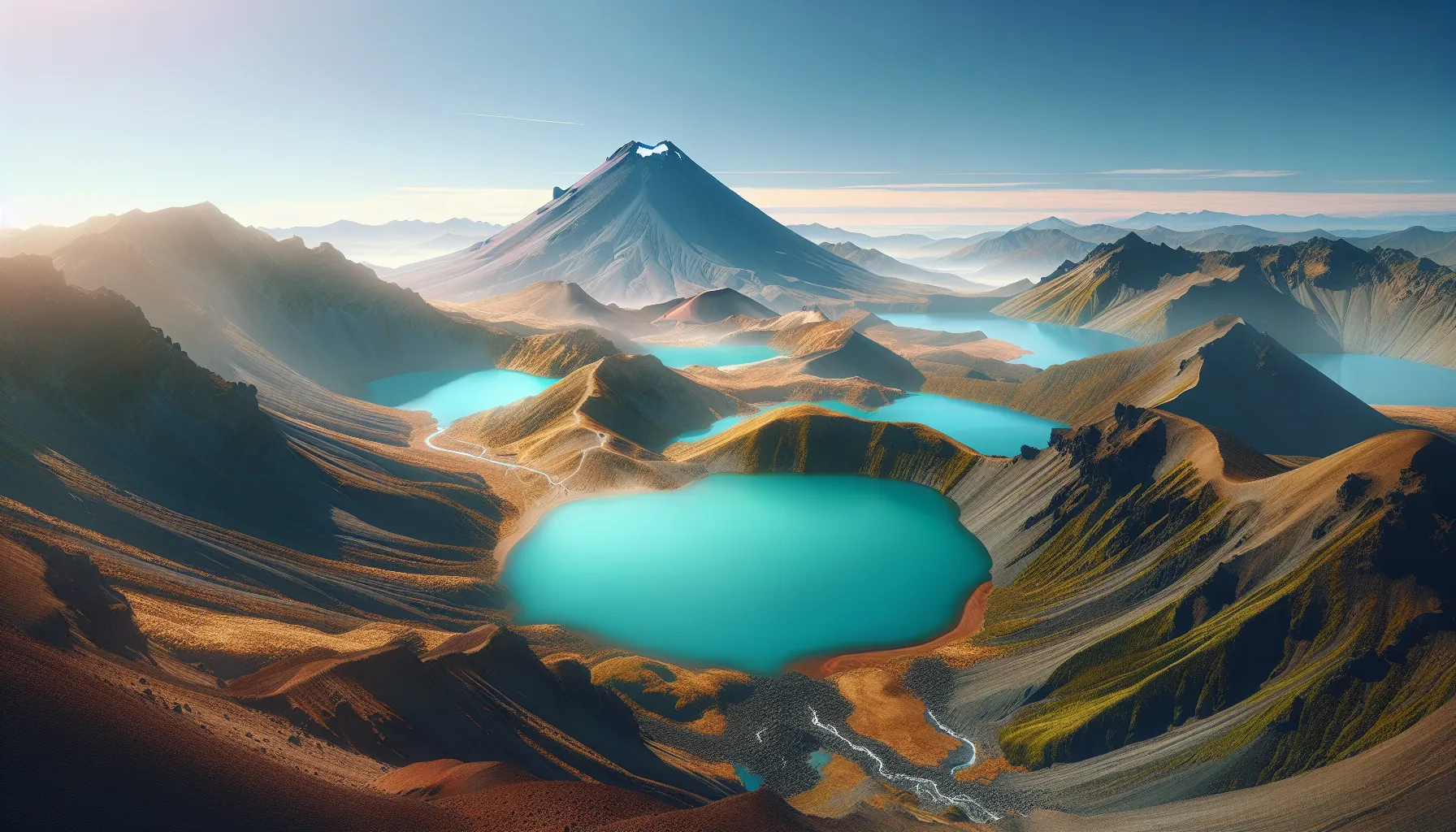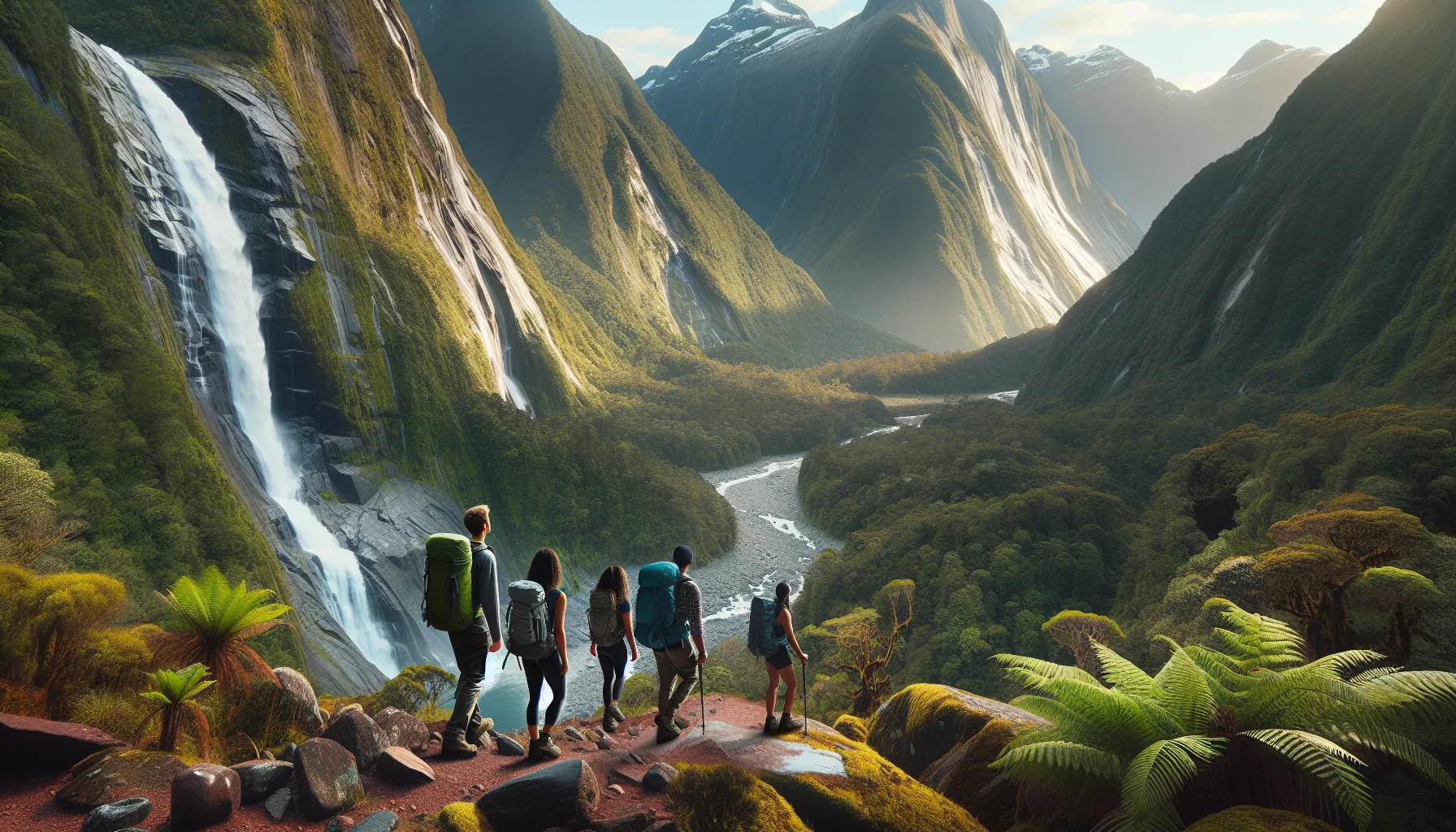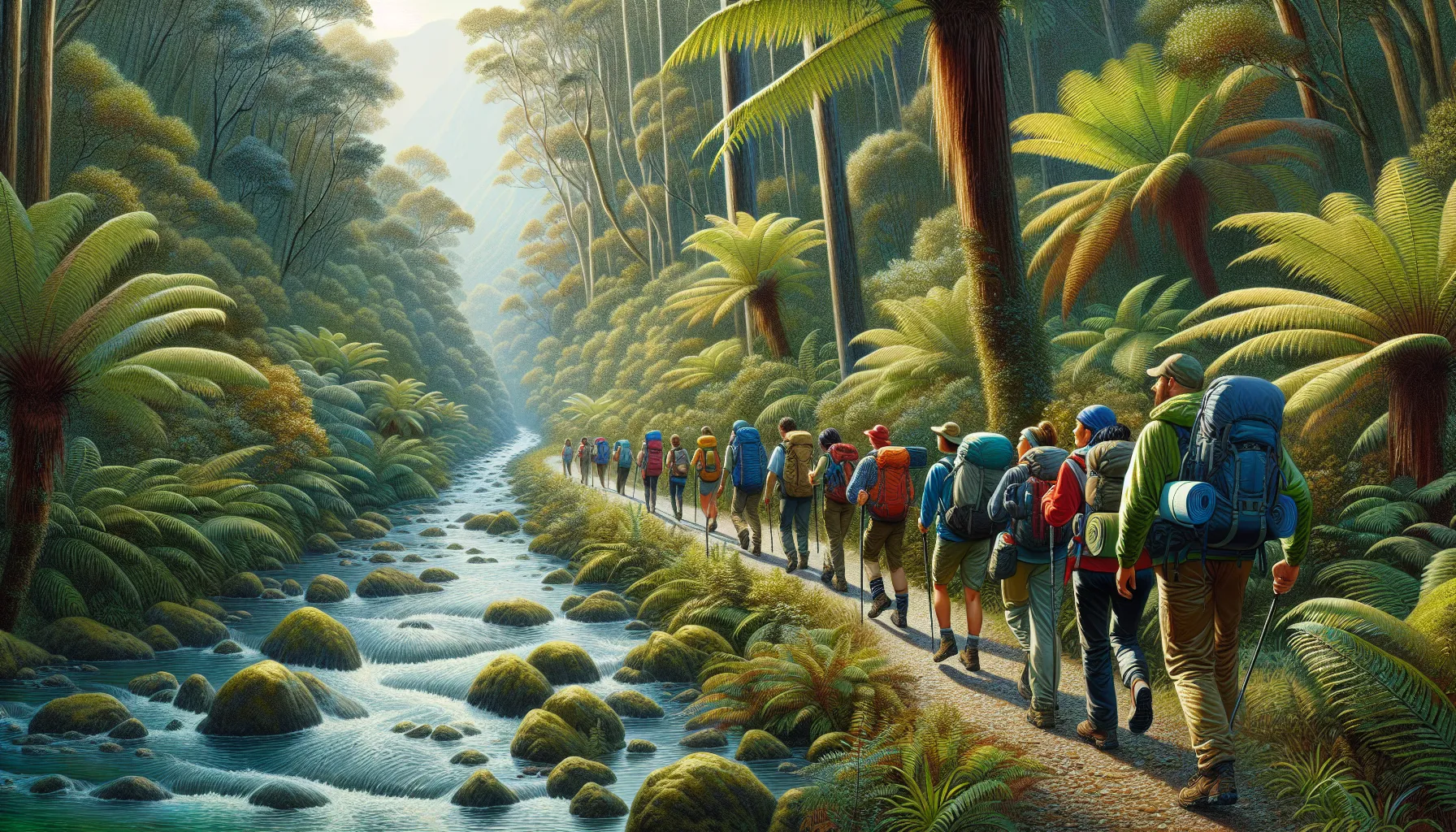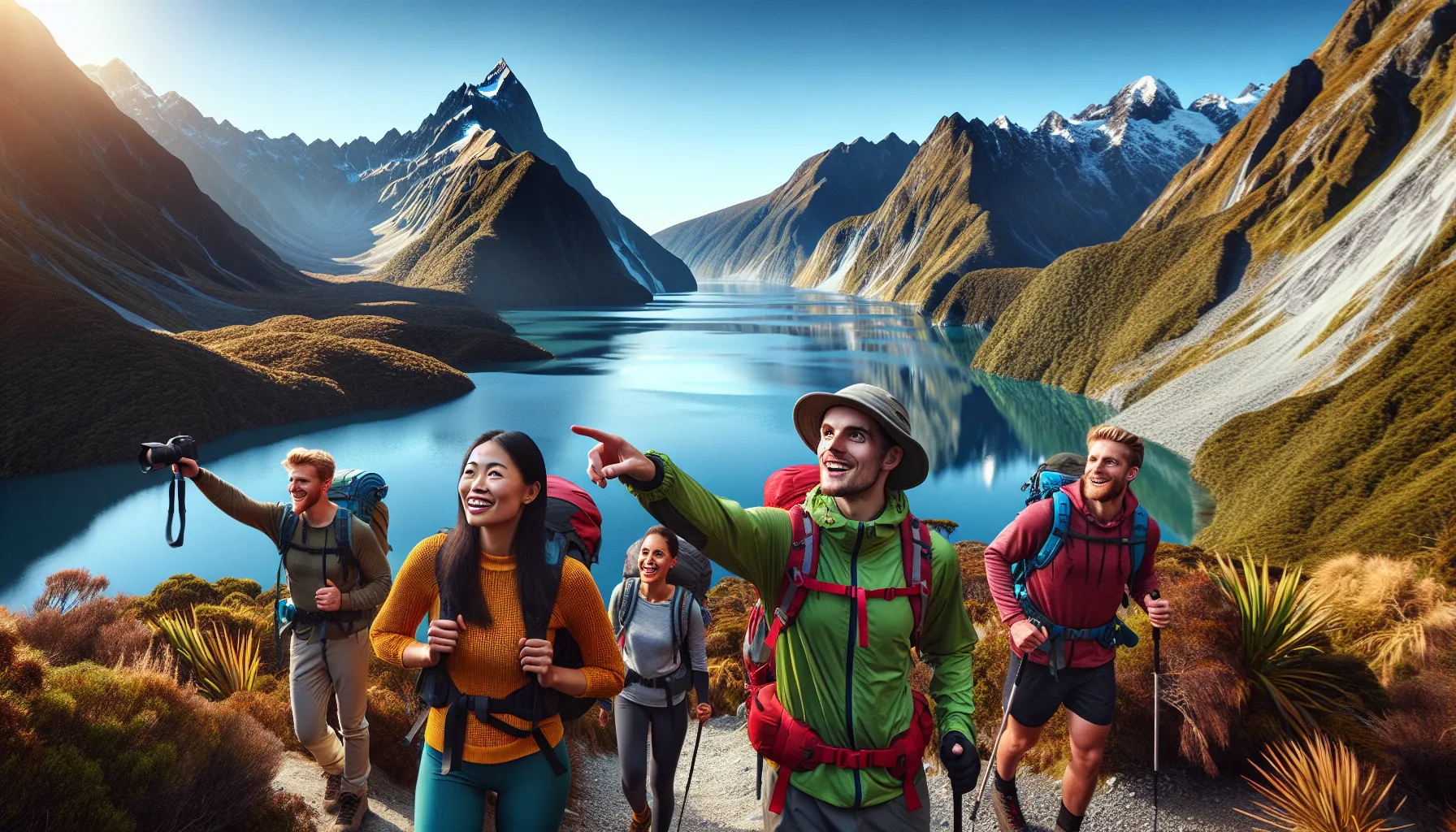Key Takeaways
- New Zealand offers diverse hiking experiences, from volcanic terrains on the North Island to stunning alpine and coastal trails on the South Island.
- Iconic trails like the Tongariro Alpine Crossing, Milford Track, and Abel Tasman Coast Track showcase the country’s breathtaking natural beauty.
- Multi-day hikes, such as the Heaphy Track and Kepler Track, provide immersive adventures across a variety of landscapes, including rainforests, mountains, and beaches.
- Preparing for rapid weather changes, wearing suitable gear, and staying on marked trails are essential for a safe and enjoyable hiking experience.
- Respecting wildlife, booking accommodations in advance, and practicing Leave No Trace principles help preserve New Zealand’s unique ecosystems for future generations.
There’s something magical about hiking in New Zealand. The landscapes feel like they’ve been plucked straight from a fantasy novel, with towering mountains, lush forests, and crystal-clear lakes. Every step brings a new view that takes your breath away, and it’s no wonder this country is a dream destination for outdoor lovers like me.
Why New Zealand Is A Hiker’s Paradise
New Zealand offers an unparalleled variety of landscapes for hikers. From volcanic terrains like Tongariro Alpine Crossing to the pristine beaches of Abel Tasman National Park, the country caters to adventurers with diverse preferences.
The well-maintained trails and numerous Great Walks make exploration accessible. Tracks like Milford Track and Routeburn Track showcase the country’s commitment to preserving its natural beauty while ensuring safe paths for visitors.
Wildlife encounters enrich the hiking experience. Native species like the kea, takahe, and kiwi often appear along trails, making every journey unique.
Year-round hiking opportunities add to its appeal. Summer trails highlight vibrant green ecosystems, while winter routes transform into snow-covered vistas, providing something special every season.
North Island Hiking Trails

The North Island features diverse trails, from volcanic landscapes to coastal cliffs. Here are three exceptional hiking experiences to explore.
Tongariro Alpine Crossing
This 19.4-kilometer trail traverses the volcanic heart of Tongariro National Park. It passes unique features like the Red Crater, Emerald Lakes, and Blue Lake. The trail offers panoramic views of active volcanoes, including Mt. Ngauruhoe, and stretches of barren landscapes. The mix of rugged beauty and geothermal activity makes it one of New Zealand’s most iconic hikes.
Te Henga Walkway
This coastal trail connects Bethells Beach with Muriwai and offers spectacular views of rugged cliffs and wild beaches. Spanning roughly 10 kilometers, hikers pass through farmland, native bush, and scenic viewpoints overlooking the Tasman Sea. Wildlife enthusiasts can spot seabirds such as gannets along the cliffs during the journey.
Lake Waikaremoana Great Walk
This 46-kilometer multi-day hike circles Lake Waikaremoana in Te Urewera. The path meanders through dense forests, serene bays, and stunning viewpoints like Panekire Bluff. The rich biodiversity includes native birds like tui and kereru. For an immersive wilderness experience, hikers can camp along the trail or use the backcountry huts.
South Island Hiking Trails

South Island’s hiking trails offer some of the most awe-inspiring landscapes in New Zealand. From towering peaks to pristine coastlines, these routes showcase the region’s natural wonders.
Milford Track
The Milford Track spans 33.5 miles (54 kilometers) through Fiordland National Park. It starts at Glade Wharf and ends at Sandfly Point. The trail passes stunning scenery, including the Mackinnon Pass, dense rainforests, and the towering Sutherland Falls, which drop 1,902 feet (580 meters). Hikers need to book their spot in advance since this Great Walk is highly popular.
Routeburn Track
The Routeburn Track connects Mount Aspiring and Fiordland National Parks. Covering 20 miles (32 kilometers), it offers alpine vistas, crystal-clear rivers, and unique vegetation. This trail is ideal for breathtaking views of the Hollyford Valley and Lake Harris. The well-maintained path allows for a 2-3 day trek, with options to stay in backcountry huts along the way.
Abel Tasman Coast Track
The Abel Tasman Coast Track, located in Abel Tasman National Park, stretches 37 miles (60 kilometers) along golden beaches and turquoise bays. The easy-to-moderate trail features coastal forests and access to scenic spots like Cleopatra’s Pool. Hikers can complete sections of the walk or plan a 3-5 day trip, blending hiking with kayaking for a unique experience.
Multi-Day Hiking Adventures

New Zealand’s multi-day trails offer unforgettable experiences for those ready to immerse themselves in nature over several days. These routes highlight the country’s diverse ecosystems, combining stunning scenery with rewarding challenges.
Heaphy Track
The Heaphy Track spans 49 miles (78.4 kilometers) through Kahurangi National Park. This four-to-six-day hike showcases a variety of landscapes, including lush rainforests, subalpine tussocks, and pristine beaches. I found the section along the Heaphy River particularly serene, with swinging bridges and native nikau palms adding to the charm. Multiple backcountry huts and campsites make this trail well-suited for hikers seeking both adventure and comfort.
Kepler Track
Located in Fiordland National Park, the Kepler Track is a 37-mile (60-kilometer) loop designed to offer panoramic views and diverse terrains. Over three to four days, hikers traverse beech forests, alpine ridges, and mossy valleys. I loved the section overlooking Lake Te Anau; the breathtaking vistas made the steep climbs worth the effort. Luxmore Hut provides a popular stop, offering stunning sunrise views for early risers.
Rakiura Track
On Stewart Island, the Rakiura Track is a 20-mile (32-kilometer) loop completed over two to three days. Its tranquil settings include coastal landscapes, native bush, and abundant birdlife. If lucky, I could hear or even spot a kiwi in the wild, as these elusive birds thrive here. Accessible year-round, this track provides an authentic and peaceful hiking experience far from crowded trails.
Essential Tips For Hiking In New Zealand
Prepare For Changing Weather
New Zealand’s weather can shift rapidly, especially in alpine areas. I always pack layers, including a waterproof jacket, a warm mid-layer, and quick-drying base layers, regardless of the season. Checking the local weather forecast through reliable sources like MetService before heading out helps avoid surprises.
Wear Suitable Gear
Comfortable, durable hiking boots with good grip are essential for New Zealand’s varied terrain. For hikes like the Tongariro Crossing or Routeburn Track, I recommend sturdy footwear to handle rocky paths and steep inclines. Carrying a backpack with essentials, including a first aid kit, snacks, and water, adds convenience.
Follow Track Signs
Sticking to marked trails ensures safety and minimizes environmental impact. I focus on following the Department of Conservation (DOC) markers, which are prominent on all official trails. Straying off routes can damage fragile ecosystems and lead to getting lost.
Respect Wildlife
New Zealand’s native species, like kiwis and kea, deserve respect. I admire wildlife from a distance and avoid feeding animals, which can harm them. Staying quiet and moving slowly increases the chance of spotting rare species in their natural settings.
Plan Accommodation During Multi-Day Hikes
Booking backcountry huts or campsites early is crucial for popular Great Walks like Milford or Kepler tracks. I use the DOC website to secure spots, as availability is limited during peak seasons. When camping, carrying lightweight, portable gear enhances the experience.
Carry Sufficient Supplies
Some remote trails lack facilities, so I always bring enough food and water for the hike. On tracks like the Heaphy or Rakiura, having a water filter or purification tablets helps with access to clean drinking water. Energy-dense snacks keep me fueled on longer treks.
Protect The Environment
New Zealand’s unique ecosystems require care. I follow the Leave No Trace principles, always packing out trash and avoiding shortcuts across sensitive areas. Conservation ensures these trails remain pristine for future hikers.
Conclusion
Hiking in New Zealand is nothing short of magical. Whether you’re drawn to the volcanic landscapes of the North Island or the dramatic fjords of the South Island, there’s a trail for everyone. The variety, from coastal walks to alpine adventures, offers endless opportunities to connect with nature and create unforgettable memories.
As someone who loves the outdoors, I can’t recommend New Zealand’s trails enough. They’re not just hikes—they’re journeys through some of the most breathtaking scenery on the planet. So pack your gear, lace up your boots, and get ready to explore a land that feels like it was made for adventure.
Frequently Asked Questions
What are the best hiking trails in New Zealand for beginners?
New Zealand offers excellent trails for beginners, such as the Abel Tasman Coast Track with its easy-to-moderate paths, stunning beaches, and calm oceans. Another great option is the Te Henga Walkway, where you can enjoy coastal views and spot seabirds.
What is the best time of year to hike in New Zealand?
You can hike in New Zealand year-round! Summer (December to February) offers vibrant ecosystems and mild weather, while winter (June to August) provides snow-covered landscapes for a unique experience. Always check trail conditions before heading out.
What should I pack for hiking in New Zealand?
Pack layers for changing weather, durable hiking boots, a rain jacket, sunscreen, a map, snacks, plenty of water, and emergency essentials like a first aid kit and flashlight.
Do I need to book the Great Walks in advance?
Yes, booking in advance is essential for New Zealand’s Great Walks, especially popular ones like Milford Track and Routeburn Track, as they have limited spots for huts and campsites.
Are multi-day hikes in New Zealand suitable for beginners?
Some multi-day hikes, like the Rakiura Track and Abel Tasman Coast Track, are suitable for beginners due to easy-to-moderate terrain and well-maintained trails. However, prepare thoroughly and start with shorter hikes.
Is it possible to spot wildlife while hiking?
Yes, many trails offer opportunities to see native wildlife like the kea, kiwi, and takahe. Just remember to maintain a safe distance and respect the animals.
Are hiking trails in New Zealand well-marked?
Yes, New Zealand’s hiking trails are highly maintained and well-marked, ensuring a safe experience for hikers. Always follow signs and stick to designated paths.
Are there any coastal hiking trails in New Zealand?
Absolutely! Trails like the Abel Tasman Coast Track and Te Henga Walkway offer breathtaking ocean views, golden beaches, and opportunities for coastal exploration.
How long is the Milford Track, and is it challenging?
The Milford Track is 33.5 miles (54 kilometers) long and takes about 4 days to complete. It features moderate-to-challenging terrain, making it best for prepared hikers.
What safety tips should I follow while hiking in New Zealand?
Always check the weather forecast, carry essential supplies, follow marked trails, and inform someone of your plans. Respect wildlife and adhere to Leave No Trace principles to protect the environment.

